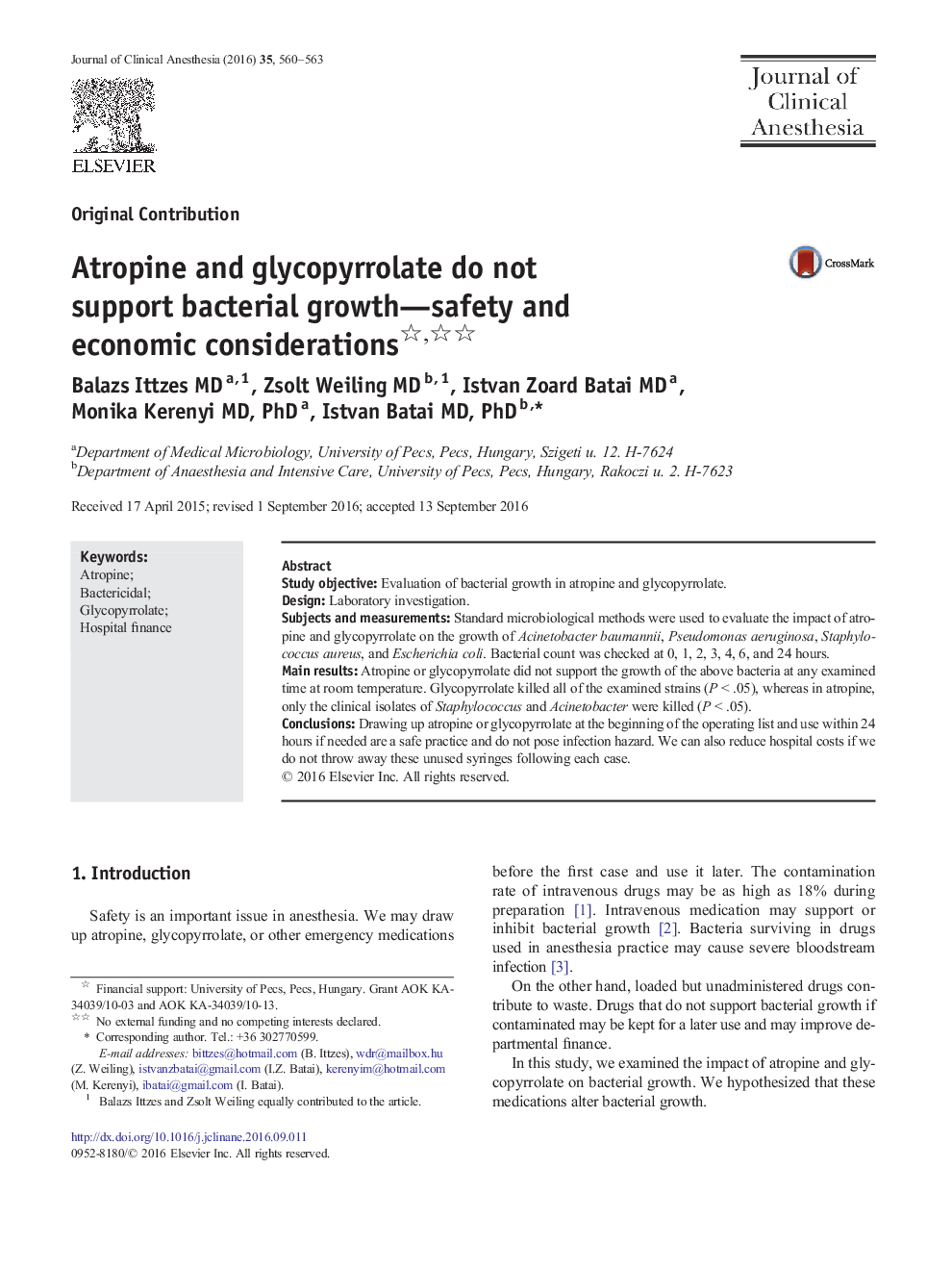| Article ID | Journal | Published Year | Pages | File Type |
|---|---|---|---|---|
| 5884356 | Journal of Clinical Anesthesia | 2016 | 4 Pages |
â¢Injections may be contaminated during preparation.â¢Contaminated medications pose an infection risk if they support bacterial growth.â¢Atropine or glycopyrrolate is frequently drawn up before anesthesia but not used.â¢Atropine and glycopyrrolate do not support bacterial growth if contaminated.â¢Keeping drawn up but unused atropine or glycopyrrolate reduces financial waste.
Study objectiveEvaluation of bacterial growth in atropine and glycopyrrolate.DesignLaboratory investigation.Subjects and measurementsStandard microbiological methods were used to evaluate the impact of atropine and glycopyrrolate on the growth of Acinetobacter baumannii, Pseudomonas aeruginosa, Staphylococcus aureus, and Escherichia coli. Bacterial count was checked at 0, 1, 2, 3, 4, 6, and 24 hours.Main resultsAtropine or glycopyrrolate did not support the growth of the above bacteria at any examined time at room temperature. Glycopyrrolate killed all of the examined strains (P < .05), whereas in atropine, only the clinical isolates of Staphylococcus and Acinetobacter were killed (P < .05).ConclusionsDrawing up atropine or glycopyrrolate at the beginning of the operating list and use within 24 hours if needed are a safe practice and do not pose infection hazard. We can also reduce hospital costs if we do not throw away these unused syringes following each case.
